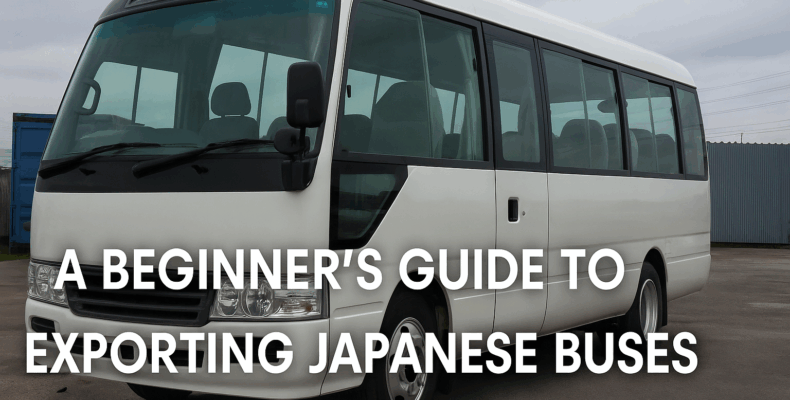A Beginner’s Guide to Exporting Japanese Buses
Exporting Japanese used buses can seem overwhelming at first. However, with the right knowledge and reliable partners, the process becomes straightforward. Japan is a global leader in producing durable and cost-effective buses such as the Toyota Coaster, Mitsubishi Rosa, Nissan Civilian, and Isuzu Journey. These models are in high demand across Africa, the Caribbean, South America, and the Pacific Islands.
This guide will walk beginners through the essential steps of exporting, highlight common challenges, and explain how to work with trusted Japanese exporters.
1. Why Japanese Used Buses Are Popular Worldwide
Japanese buses are known for their:
-
Reliability: Engines last hundreds of thousands of kilometers.
-
Fuel Efficiency: Lower operating costs for transport businesses.
-
Spare Parts Availability: Easy access to affordable replacement parts.
-
Comfort and Safety: Passenger-friendly designs with advanced safety systems.
Because of these advantages, importers from countries like Kenya, Tanzania, Fiji, and Jamaica consistently prefer Japanese models.
2. Step-by-Step Process of Exporting Japanese Buses
Step 1: Research and Select the Right Bus
Decide on the bus model based on your country’s needs. For example, Toyota Coaster is ideal for schools and tourism, while Mitsubishi Rosa suits public transport operators.
Step 2: Check Auction and Dealer Listings
Japanese used bus auctions provide thousands of choices. However, beginners should rely on professional exporters to avoid risks and secure accurate vehicle condition reports.
Step 3: Arrange Export Documentation
Essential documents include:
-
Invoice and Bill of Sale
-
Export Certificate
-
Bill of Lading (B/L)
-
Inspection Certificates (such as JEVIC or QISJ, depending on the destination country)
Step 4: Shipping Options
-
RoRo (Roll-on/Roll-off): Affordable, quick, best for buses in running condition.
-
Container Shipping: More protection, ideal for high-value or partially dismantled buses.
Step 5: Customs Clearance at Destination
Ensure you understand local import duties, VAT, and compliance rules. Smooth clearance depends on accurate paperwork and professional guidance.
3. Tips for Beginners to Avoid Common Pitfalls
-
Always request maintenance records before purchase.
-
Avoid unverified exporters to reduce fraud risk.
-
Compare total landed costs (vehicle price + shipping + duties).
-
Plan ahead to avoid delays at ports due to missing documents.
4. Why Work with Professional Exporters
New buyers often underestimate the complexity of logistics and documentation. By partnering with experienced exporters, beginners gain:
-
Honest vehicle inspections
-
Secure payment channels
-
Reliable shipping arrangements
-
After-sales support and spare parts advice
👉 Here is a recommended list of trusted exporters:
Top 5 Trusted Japanese Used Truck Exporters for Global Buyers
Read the full article here
These companies are based in Japan and are known for handling thousands of safe and successful exports every year.
5. Final Thoughts
Exporting Japanese used buses does not have to be complicated. With careful planning, knowledge of the process, and assistance from reputable exporters, beginners can enjoy smooth transactions.
Whether you are starting a transport business in Africa, expanding a tourism fleet in the Caribbean, or providing public service buses in island nations, Japanese buses remain the top choice.
Closing Note
There are many Japanese Used Car, trucks, buses, and farm tractors in the Japanese market.
If you want to import a Used Car, please check the recommended Japanese used car export companies:
👉 Top 5 Trusted Japanese Used Truck Exporters for Global Buyers
